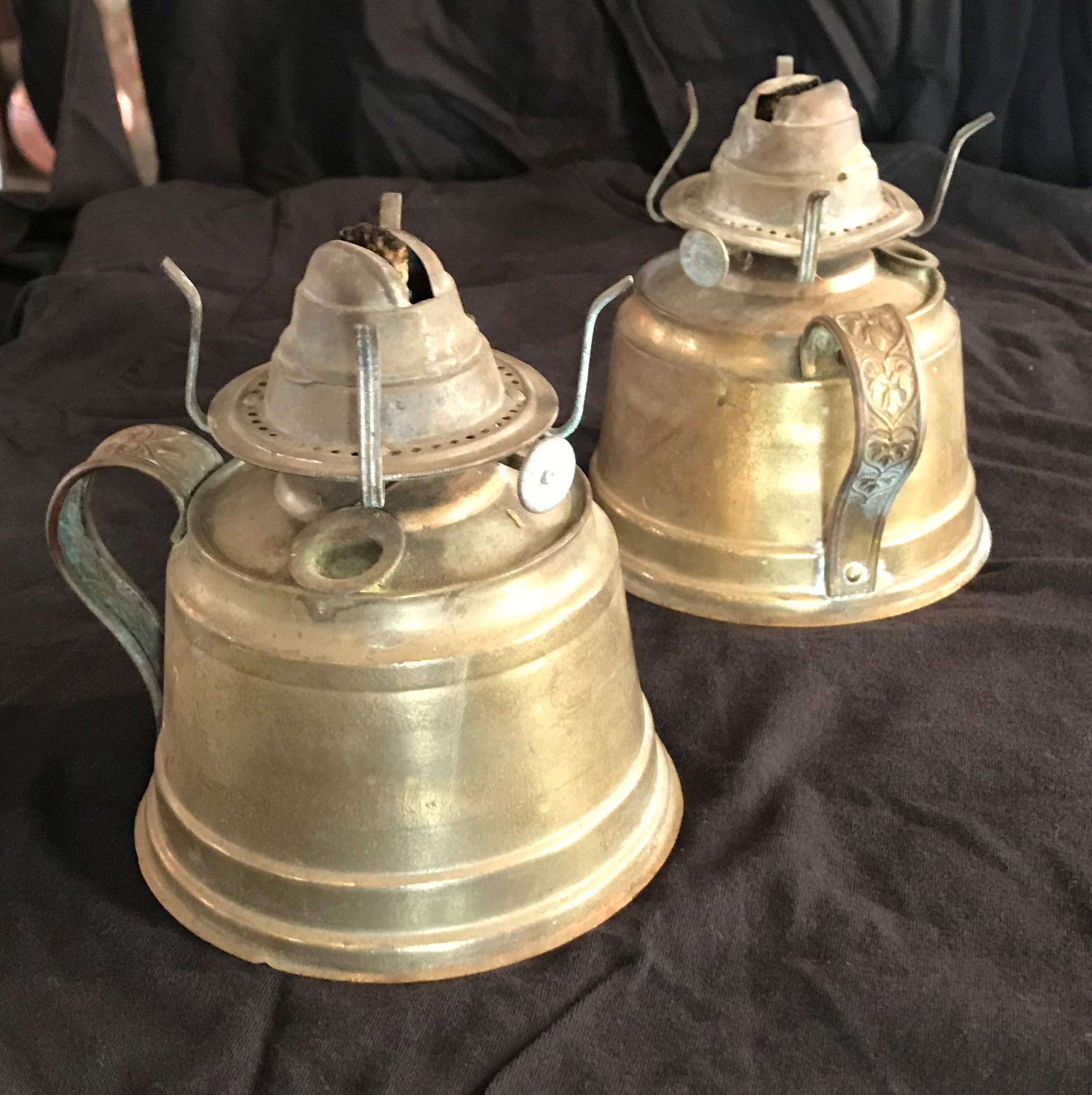Historic Tools of North Castle
Hurricane Lamps (2)
These items at Smith’s Tavern are two kerosene-fueled lamps with copper bottom/fuel reservoirs with a “C” shaped handle. There was one flat wick in the lip style tube; there are four prongs that would hold the glass chimneys (missing from both items) which acted to prevent the flame from being blown out and enhanced the thermally induced draft. The glass chimney needed a "throat", or slight constriction, to create the proper draft for complete combustion of the fuel; the draft carries more air (oxygen) past the flame, helping to produce a smokeless light, which is brighter than an open flame would produce.
The lower part of the wick dips into the fount and absorbs the kerosene; the top part of the wick extends out of the wick tube of the lamp burner, which includes a wick-adjustment mechanism. Adjusting how much of the wick extends above the wick tube controls the flame. The wick tube surrounds the wick and ensures that the correct amount of air reaches the lamp burner. Adjustment is usually done by means of a small knob operating a critic, which is a toothed metal sprocket bearing against the wick. If the wick is too high and extends beyond the burner cone at the top of the wick tube, the lamp will produce smoke and soot (unburned carbon). When the lamp is lit, the kerosene that the wick has absorbed burns and produces a clear, bright, yellow flame. As the kerosene burns, capillary action in the wick draws more kerosene up from the fuel tank. All kerosene flat-wick lamps use the dead-flame burner design, where the flame is fed cold air from below, and hot air exits above.
Reference: https://en.wikipedia.org/wiki/Kerosene_lamp
Catalog Items:
Item None
| Location: | Left Shelf - 2nd |
|---|---|
| Length: | 12 cm |
| Width: | 12 cm |
| Height: | 14 cm |
| Weight: | 166 g |
Item None
| Location: | Left Center - 2nd |
|---|---|
| Length: | 12 cm |
| Width: | 12 cm |
| Height: | 14 cm |
| Weight: | 177 g |
